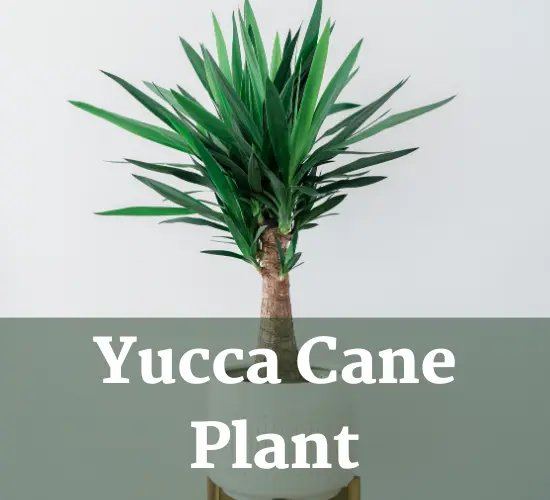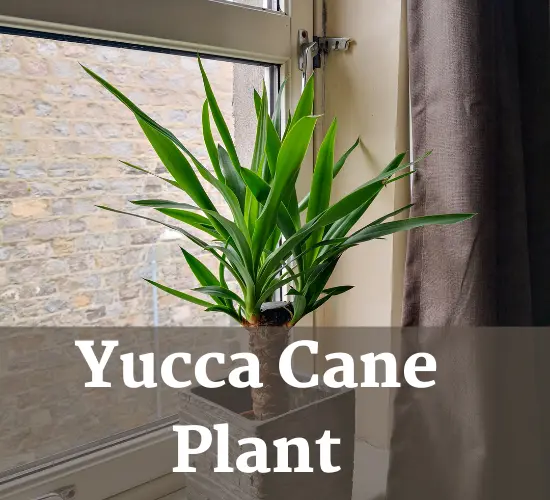Table of Contents
Yucca Cane Plants
The Yucca Cane, a low-maintenance statement plant native to Guatemala and southeast Mexico, is an excellent choice for those seeking an easy-to-grow plant for their home. With its sword-like green leaves perched atop sturdy canes, this plant thrives in dry environments and bright sunlight, making it a perfect option for first-time plant owners.
In this article, we will provide you with easy care tips to ensure your Yucca Cane remains stunning all year round, allowing you the freedom to enjoy its beauty without the hassle of constant maintenance. Understanding Yucca Cane’s preferences and needs is crucial for its successful cultivation. From temperature preferences to watering instructions, we will delve into the various aspects of plant care to equip you with the necessary knowledge.
By following our expert advice, you will be able to create an environment that fosters the growth and well-being of your Yucca Cane, allowing it to flourish effortlessly. So, whether you are a busy individual seeking a low-maintenance plant or simply someone who appreciates the beauty of the Yucca Cane, this article will provide you with the essential tips to ensure its stunning presence in your home.
Yucca Cane Overview

Yucca Cane, the effortlessly chic and low-maintenance plant, graces homes with its impressive sword-like leaves and sturdy canes. As a statement plant, the Yucca Cane adds a touch of sophistication to any interior decor. With its origins in Guatemala and southeast Mexico, this plant is classified as Yucca Elephantipes and is well-suited for first-time plant owners due to its easy care requirements.
One of the benefits of incorporating Yucca Cane into home decor is its ability to propagate easily. Yucca cane propagation can be achieved through stem cuttings or by separating the offshoots that sprout from the main plant. This allows plant enthusiasts to expand their collection effortlessly and share the beauty of this plant with others.
Additionally, the Yucca Cane’s impressive architectural form and vibrant green leaves make it a versatile addition to any interior design style. Its tall canes create a vertical element that adds height and drama to a space, while the sword-like leaves bring a touch of nature indoors. Whether placed in a minimalist, modern setting or a bohemian, eclectic space, the Yucca Cane adds a striking focal point that effortlessly enhances the overall aesthetic.
Plant Care Instructions
Native to Guatemala and southeast Mexico, this plant requires specific care instructions for optimal growth and health. To ensure the stunning appearance of your Yucca Cane, it is important to avoid common mistakes in its care.
One common mistake is overwatering. Yucca Canes are succulent plants that prefer dry environments, so it is crucial to allow the soil to dry out between waterings. Overwatering can lead to root rot and other issues that can harm the plant’s overall health.

Another mistake to avoid is using the wrong type of soil. Yucca Canes thrive in well-draining soil, so it is best to use a sandy or gritty soil mix that allows excess water to flow through easily. This helps prevent waterlogging and ensures that the plant‘s roots stay healthy.
In addition to avoiding common mistakes, providing the best soil for your Yucca Cane is essential. As mentioned earlier, a well-draining soil mix is ideal. You can create this mix by combining equal parts of potting soil, perlite, and coarse sand. This combination allows for proper drainage while still providing enough nutrients for the plant’s growth.
It is important to note that Yucca Canes are adaptable plants and can tolerate a range of soil conditions, but providing the best soil will promote optimal growth and prevent issues such as root rot.
By following these care instructions and providing the best soil for your Yucca Cane, you can ensure that it thrives and remains stunning in your home.
Potential Issues and Solutions
One potential issue that may arise when caring for this plant is the occurrence of yellow leaves, which can be caused by a variety of factors such as overwatering, underwatering, or exposure to extreme temperatures.
Overwatering is a common mistake that many plant owners make, as Yucca Cane prefers dry environments. If the soil is consistently wet or waterlogged, the roots may become waterlogged and suffocate, leading to the yellowing of the leaves. On the other hand, underwatering can also cause yellow leaves, as the plant may not be receiving enough water to sustain its growth. It is important to find the right balance and allow the soil to dry out slightly between waterings.
Additionally, extreme temperatures can stress the plant and cause the leaves to turn yellow. Yucca Cane thrives in temperatures between 65°F-85°F, so it is important to avoid placing it in areas with excessive heat or cold.
To troubleshoot the issue of yellow leaves, it is important to first assess the watering habits and adjust accordingly. If overwatering is the problem, allow the soil to dry out before watering again. On the other hand, if underwatering is the issue, increase the frequency of watering and ensure that the soil is thoroughly moistened. It is also advisable to check for proper drainage in the pot to prevent waterlogging.
In terms of temperature, ensure that the plant is not exposed to extreme heat or cold, and provide it with a suitable environment within the recommended temperature range. Additionally, it is important to ensure that the plant is receiving adequate sunlight. Yucca Cane thrives in bright indirect to bright light, so if the plant is not getting enough light, it may result in yellowing leaves.
By addressing these common problems and following the troubleshooting tips, plant owners can maintain the stunning appearance of their Yucca Cane plants.
Frequently Asked Questions
How often should I repot my Yucca Cane plant?
The frequency of repotting a Yucca Cane plant depends on the signs of a root-bound plant. These signs include roots growing out of drainage holes and a decrease in plant growth. Repotting should be done when necessary to ensure the plant’s health and vitality.
What is the best soil mix for Yucca Cane plants?
To ensure optimal growth of yucca cane plants, a well-draining soil mix is recommended. Incorporating a balanced fertilizer with nitrogen, phosphorus, and potassium is essential. Water sparingly, allowing the soil to dry out between waterings.
Can I keep my Yucca Cane plant outdoors during the summer?
Yucca cane plants can be kept outdoors during the summer in hot climates. Place them in a sunny location and ensure they receive adequate water and protection from extreme heat. Monitor for pests and provide occasional misting to maintain their health.
How tall can a Yucca Cane plant grow?
The majestic Yucca Cane plant reaches for the sky, with heights of up to 8 feet. To ensure its growth, provide proper Yucca Cane plant care, including bright sunlight, monthly fertilization, and a dry environment.
2 thoughts on “Easy Care Tips For Stunning Yucca Cane Plants”